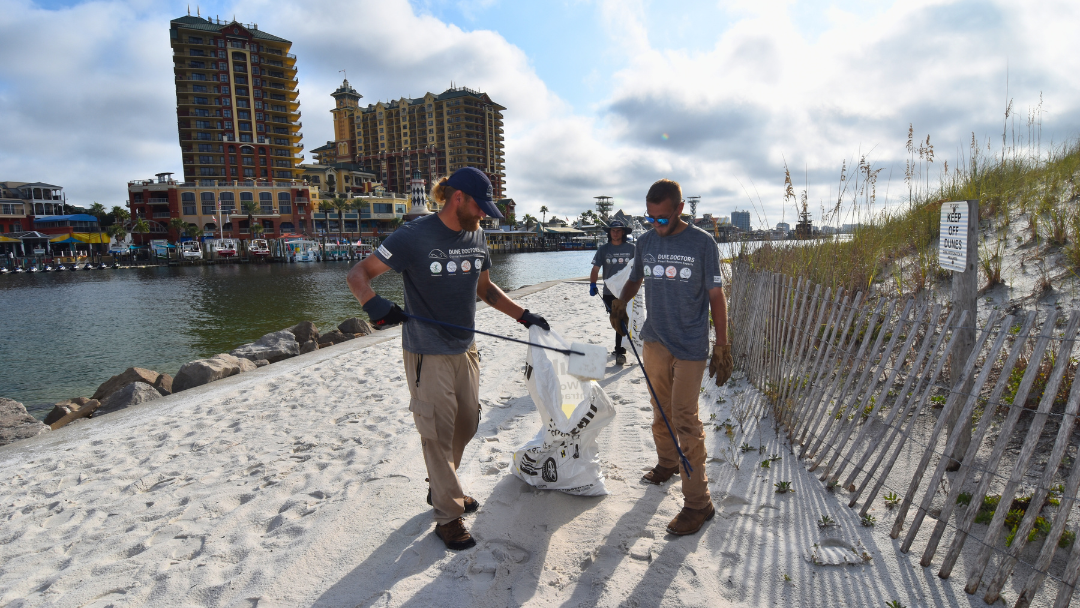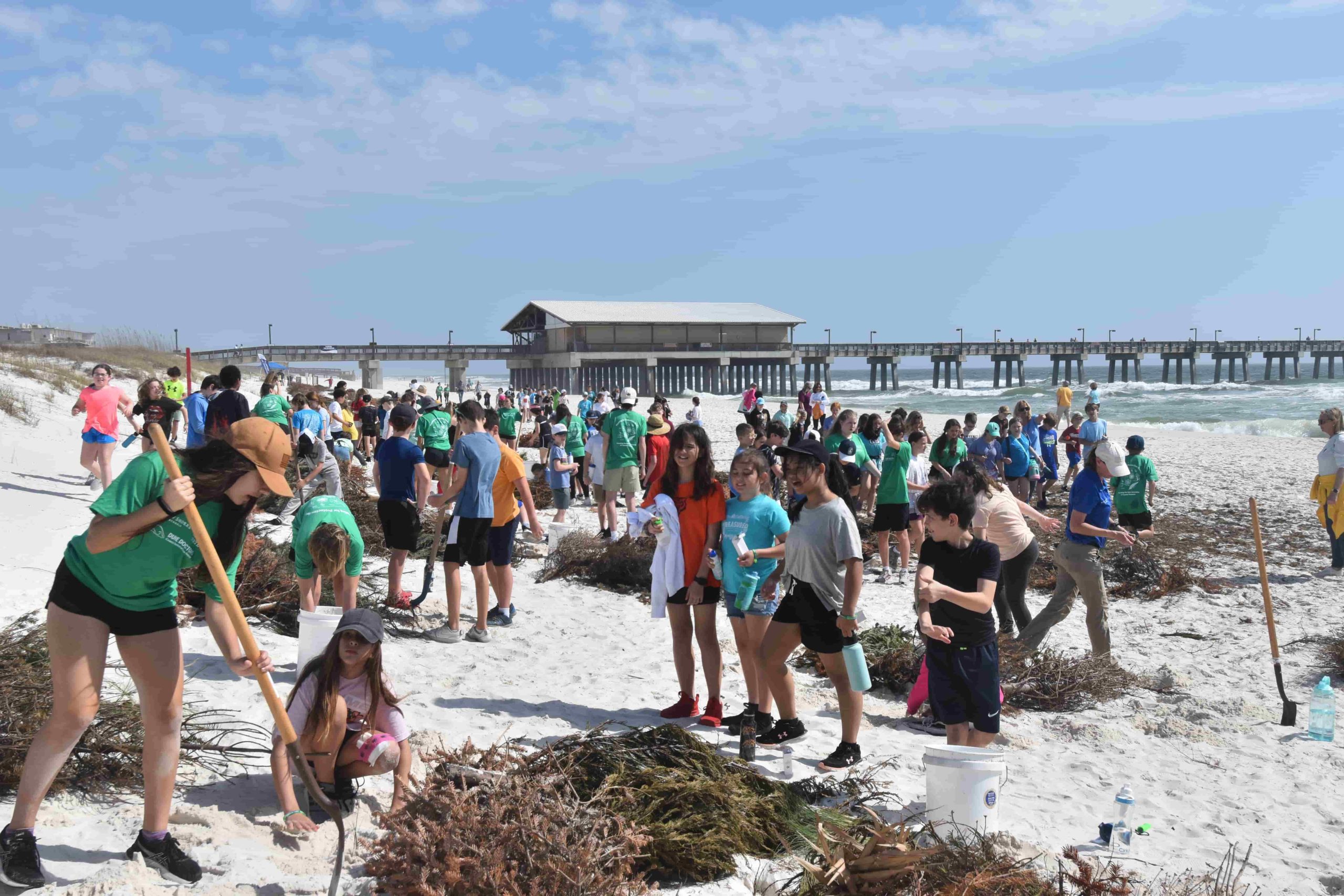- Article Highlight: Sea oats build, sustain, and protect dune systems. Healthy coastal vegetation anchors dunes in place creating a natural barrier against storm surge.
- Key Takeaway: One of the first steps towards building coastal resiliency is to invest in sea oats. Sea oats yield a high return-on-investment as the plants can quickly propagate when correctly installed and cared for.
- Learn Fast: Watch the video below to understand how sea oats help protect against erosion.
How does Nature Protect Against Coastal Erosion?
Pounding waves, scorching sunlight, flooding, and high-speed winds impact all living things along the beach. This environment is under constant stress, resulting in the survival of a resilient few. At the center of these powerful coastal forces is a plant that protects the Eastern and Southern shorelines from erosion and stabilizes the dune habitat: sea oats. Nature protects against coastal erosion with the help of the sturdy, dune-building sea oats.
How do Sea Oats Anchor Sand Dunes in Place?
Sea oats may seem non-extraordinary and are often depicted in artwork, as feathered flowers bending with the ocean’s breeze. However, similar to how the tip of an iceberg cannot reveal its depth, the vast and complex root system developed by sea oats extends down through the dune’s core to reach the water basin. To survive, sea oats create an intricate web that captures scarce nutrients and water. According to Carrie Stevenson, the University of Florida’s coastal sustainability agent for Escambia County, sea oats’ roots can grow up to 40ft deep. The limited availability of fresh water in the dune environment encourages root growth, and the deep roots, in turn, help anchor the dune in place.
How do Sea Oats Stabilize Sand Dunes?
Sea oats are self-spreading plants. In addition to a fibrous root ball, sea oats also have a unique stem called a rhizome. Instead of growing up, rhizomes spread horizontally and develop new plants from its nodes. Each new plant will, in time, also send out more rhizomes. The sea oats’ rhizomatous growth allows for the plants to spread and vegetate bare areas. Eventually, the rhizomes will overlap each other contributing to the complex web of interconnected plants and root systems that stabilize sand dunes.
How do Sea Oats Help Build Sand Dunes?
While a sea oats’ root system determines the dune’s structural integrity, the plant’s above-ground portion accelerates sand accretion. When coastal winds come into contact with sea oats, wind-borne particles drop and deposit around the base of the plant. By trapping wind-blown sand, sea oats help further build sand dunes. Unlike most plants, sea oats can survive and benefit from being buried as it encourages the plant to grow more stems and helps pin down their rhizomes.
Why are Sea Oats so Prevalent along the Coast?
Sea oats are so prevalent along the coast because, often, they are the first to colonize impacted dunes after a storm event. For this reason, sea oats are considered pioneer species, a classification for highly resilient plants and animals that are the first to repopulate an ecosystem after damage or disruption has occurred. If a storm event buries or displaces the plants, sea oats will often resurface or establish where they wash ashore.
How can I Help Protect Sea Oats?
While sea oats can survive in one of nature’s most challenging environments, the plants cannot survive being trampled. To help protect sea oats, avoid walking through coastal dunes. The plants’ stems will snap under the localized pressure of a footstep. If a footpath cuts through a dune, the sea oats growing along the path will die and not stabilize the sand. Wind will erode the trail, creating a depression in the dune. In the event of a storm, the pathway will, unfortunately, function as a channel for storm surge to breach the protective barrier. Often, on the other end of a footpath will be vulnerable structures like the ground-level entrance to a building, its pool or garage.
Why is Proper Installation Critical for Sea Oat Survival?
Besides foot traffic, the only other leading cause of sea oat death is improper installation, making proper installation critical for the plant’s survival. When selecting a company to install dune-building vegetation, make sure to ask what their average plant survival rate was for previous coastal restoration projects. The industry average for government-led projects is roughly 70% survival. Dune Doctors works with the highest quality of sea oats available and guarantees that our plants don’t just survive but thrive and reach a rate above 95% on all projects. Proper sea oat installation lays the foundation for achieving coastal resiliency. If the planting is successful, the sea oats will quickly establish, enhance the beauty of this environment, and offer robust protection for years to come.






